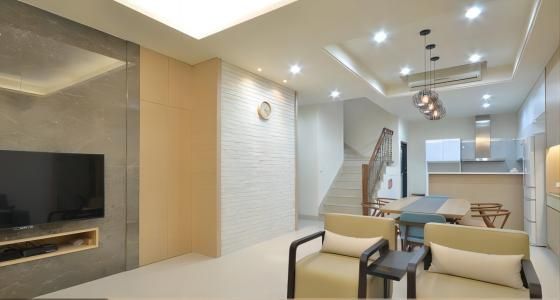With the continuous advancement of technology, home and residential safety equipment have also been significantly upgraded. Among them, home gas detectors, as one of the important equipment to ensure life safety, are gradually becoming a necessary choice for more and more families. Various harmful gases, such as Carbon Monoxide (CO), Methane (CH4), Formaldehyde (HCHO), etc., may be produced in the house. Hazardous gases, if leaked or accumulated to dangerous concentrations, may cause serious accidents such as explosions, poisoning or fires, threatening the lives and properties of residents. These gas detectors and monitors can detect these potential dangers at an early stage and issue timely alarms to help residents take necessary avoidance measures.
Why Do Houses Need Gas Detectors?
- Energy sources such as natural gas and liquefied petroleum gas used in homes are subject to leakage. These gases can build up inside the house after a leak, creating dangerous concentrations that increase the risk of fire, explosion, and poisoning. House gas detectors are able to detect these leaks at an early stage and raise the alarm if the gas concentration exceeds a safe threshold.
- Gas appliances and facilities used in the residential house, such as cookers, water heaters, etc., may be faulty or unsafe to operate, resulting in gas build-up or leakage. Gas detectors can detect the gas concentration and guard against potential fire and explosion.
- Hazardous gases such as Carbon Monoxide and Methane are mostly colorless, odorless and tasteless and are difficult to detect without specialized equipment. Home gas detectors can continuously monitor the air for the presence of these harmful gases, even at low concentrations, and once a dangerous concentration is detected, an audible alarm and a visual alarm will sound to provide safety for the homeowner.
Common Types of Gases in the Home
Common residential house hazardous gases include Carbon Monoxide (CO), Formaldehyde (HCHO), Volatile Organic Compounds (VOCs), Ammonia (NH3), Hydrogen Sulfide (H2S), Benzene (C6H6), and Radon (Rn). These harmful gases have serious impacts on human health, so it is crucial to monitor and control indoor air quality.

-
Carbon Monoxide (CO): Carbon Monoxide is a colorless, tasteless and odorless gas. The combustion of gas, wood, paint, fossil fuels, etc usually produces it. Inhalation of Carbon Monoxide in high concentrations can lead to poisoning and, in severe cases, death.
-
Formaldehyde (HCHO): Formaldehyde is a harmful gas commonly found in new furniture, decorative materials, appliances and cosmetics. It may be released through volatile organic compounds (VOCs) and can lead to reduced indoor air quality, headaches, respiratory problems and more. Long-term exposure or exposure to high levels of formaldehyde can cause eye and respiratory problems and has been linked to the development of cancer.
-
Methane (CH4): Household gas appliances such as gas cookers, water heaters, and gas fireplaces are the main sources of indoor Methane. These devices release Methane when they burn natural gas. It is a flammable gas that poses a fire and explosion hazard.
-
Liquefied Petroleum Gas (LPG): LPG is a flammable hydrocarbon gas mixture primarily composed of propane (C3H8) and butane (C4H10). It is colorless and usually odorless, but a strong-smelling additive (ethyl mercaptan) is often included for leak detection. LPG is widely used in residential cooking, heating, water heating, and also in vehicles. Improper combustion of LPG can lead to the release of dangerous gases such as carbon monoxide (CO), and gas leaks pose a fire and explosion risk. Long-term exposure to leaking LPG in poorly ventilated environments may cause symptoms such as dizziness, headaches, and, in extreme cases, asphyxiation.
-
Ammonia (NH3): Ammonia is a colorless gas with a strong, irritating odor. Indoor ammonia mainly comes from cleaning agents, household chemicals, pet urine and food. Inhaling large amounts of ammonia can cause tearing, sore throat, headache and nausea.
-
Volatile Organic Compounds (VOCs): VOCs are a class of chemicals that can evaporate into a gaseous state and are often found in products such as detergents, paints, glues, fragrances, household appliances, etc. VOCs can irritate the eyes and respiratory tract, sensitize the skin, and cause headaches, sore throats and fatigue.
Recommended Gas Alarms for Home
| Detects Gases | Typical Household Uses |
|
Carbon Monoxide (CO) |
Monitoring combustion appliances (heaters, stoves), garages, and fireplaces |
| Suitable Detector | GD200-CO, GD500-CO, GD1000-9D, GD1000-824THS, GD1000-S12, GD1000-10D |
| Detects Gases | Typical Household Uses |
|
Formaldehyde HCHO/CH2O |
Detecting emissions from furniture, flooring, and decorative materials |
| Suitable Detector | GD200-CH2O, GD1000-HCHO-1, GD1000-RC3001, |
| Detects Gases | Typical Household Uses |
|
Volatile Organic Compounds (VOCs) |
Indoor air quality monitoring, paints, cleaners, and new furniture |
| Suitable Detector | Go to the VOC gas detector page to find the one that suits you. |
| Detects Gases | Typical Household Uses |
|
Methane (CH4), Propane/Butane (LPG) |
Gas stoves, gas water heaters, and kitchen leak monitoring |
| Suitable Detector | GD200-CH4, GD1000-GS91, GD1000-C30W, GD1000-918, GD1000-902, GD1000-KP816 |
| Detects Gases | Typical Household Uses |
|
Ammonia (NH3) |
Households with pets, cleaning product use |
| Suitable Detector | GD200-NH3 |
| Detects Gases | Typical Household Uses |
|
Hydrogen Sulfide (H2S) |
Areas near drains, septic systems, or where sewer gas may be present |
| Suitable Detector | GD200-H2S |
| Detects Gases | Typical Household Uses |
| CO, CH4, EX (LEL), VOCs, etc. | Comprehensive indoor air quality monitoring |
| Suitable Detector | Go to the multi gas detector page to find the one that suits you. |
Gas detectors have become part of the smart home and they play an important role in keeping your house safe, preventing accidents and improving indoor air quality. GasDog store offers a wide range of high-quality and factory-priced home gas detectors. These products can create a healthy, safe and comfortable living environment for you.
